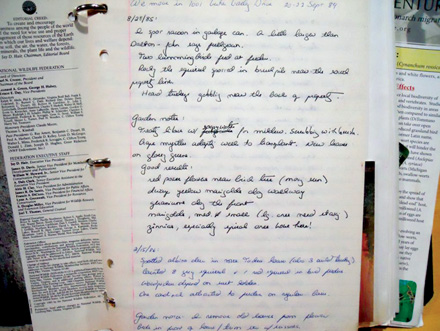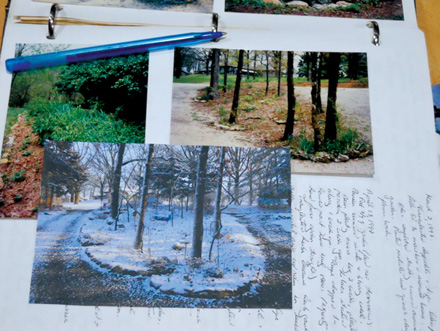2018 Gardening Calendar

To keep my major gardening chores organized, years ago I developed a gardening calendar associated with federal holidays to help me remember important milestones. This came in handy when I worked away from home full-time because it helped me get supplies and plan ahead for what I wanted to get done on those long weekends. Here’s my calendar for 2018:
Jan. 15 – Martin Luther King Day: Check plants wintering inside are getting enough sunlight; move them around and give watered down fertilizer. Mark gardening calendars for items to order. Check deck pots outside for moisture and add compost.
Feb. 14 – Valentine’s Day: Prune fruit trees. Clean and repair garden implements; wash flower pots; repair bird houses. Start looking for blooming crocus.
Feb. 19 – President’s Day: Plant onion sets, lettuce, spinach, radishes either in garden or in deck containers.
March 17 – St. Patrick’s Day: Plant potatoes, snow peas, Brussels sprouts and broccoli; start tomato and pepper seedlings.
March 20 – Spring Equinox: Prune and compost roses. Add compost to raised garden beds. Plant more lettuce, spinach, radishes, onions.
April 1 – Easter: Plant tree seedlings and native wildflowers. Update garden diary for bulbs I need to divide and move this fall; mark locations so can find them when it’s time to dig them up.
April 23 – Earth Day: Plant last of my spinach, peas and lettuce. Cover garden with tulle to keep deer out. Start pinching mums back once a week.
May 13 – Mother’s Day: Last day of frost so everything can get moved outside. Leave delicate plants outside for a few hours for the first few days to get them used to outside conditions. Leave seedlings in containers outside for a few days before moving them permanently into the garden.
May 28 – Memorial Day: Last day to plant anything from seed in garden including basil, pumpkins, cucumbers and zucchini. Compact fruit trees, bushes and perennials also get planted so they can benefit from June showers.
June 17 – Father’s Day: Last weekend to plant perennials.
July 4 – Independence Day: Last day for planting beans. Last weekend for pinching back Mums so they bloom bushy this fall.
Sept. 3 – Labor Day: Harvest fall crops; check for bugs; add compost, and start getting raised garden beds ready for winter.
Oct. 8 – Columbus Day: Trim deck plants. Start moving them inside house for winter.
Oct. 31 – Halloween: First fall hard frost. Add compost to raised bed gardens.
Nov. 11 – Veterans Day: Clean and store pots, garden implements; toss out torn gardening gloves; mark envelopes with saved seeds; update garden diary. If there’s been a hard frost, good time to mulch plant beds so soil temperature doesn’t fluctuate. Check for spring bulbs on sale.
Nov. 22 – Thanksgiving: If ground is frozen, mulch garden beds.
Dec. 21 – Winter Solstice: Water first year mums and pansies once a month through winter. Make sure winter birds have defrosted water to drink.
Dec. 25 – Christmas: Make a note on who admires your Christmas cactus to give starts to next year.
Jan. 1 – New Years: Spray inside plants for hitchhiking bugs; remove dead branches. Mark garden catalogs for possible projects.
Charlotte Ekker Wiggins is a beekeeper, gardener and sometimes cook. Published by El Dorado Springs Sun once in print and online with author’s permission. Copyright 2017, all rights reserved. This column may not be reprinted, republished or otherwise distributed without author’s permission. Contact Charlotte at gardeningcharlotte at gmail dot com.

WAY TO REMEMBER – If you don’t keep a garden diary, this is a good time to start. You can keep track of what worked well, and what didn’t, as well as other major garden changes, through a diary. I started mine in 1985 and included wildlife observations.
 PHOTO EVIDENCE – Keep track of the changes in your garden by taking photos from the same spots, especially if you have made major changes. Gardens change all on their own, too. (Photos by Charlotte Ekker Wiggins).
PHOTO EVIDENCE – Keep track of the changes in your garden by taking photos from the same spots, especially if you have made major changes. Gardens change all on their own, too. (Photos by Charlotte Ekker Wiggins).



Facebook Comments